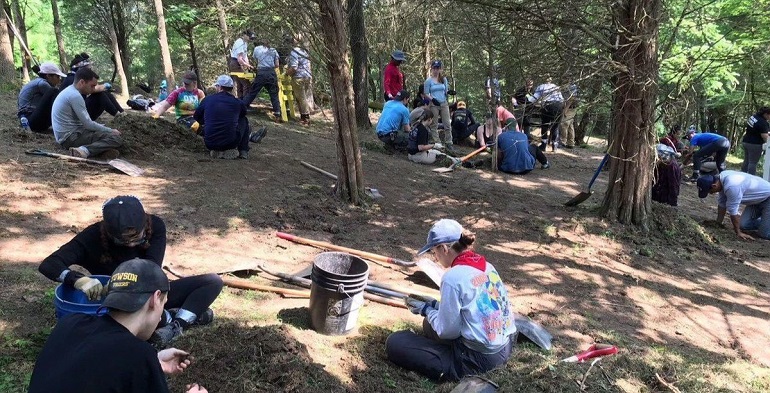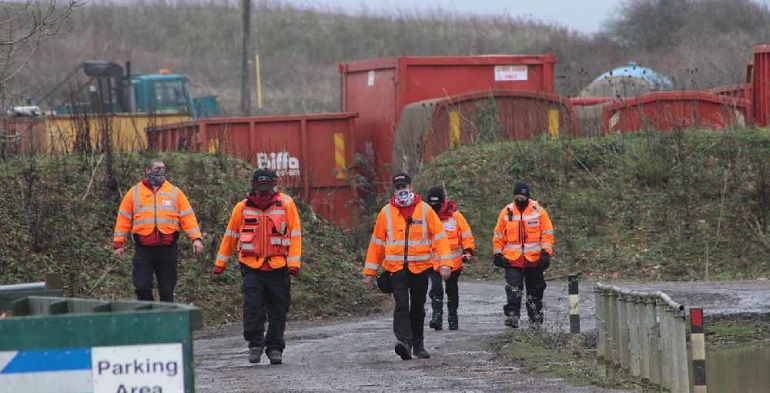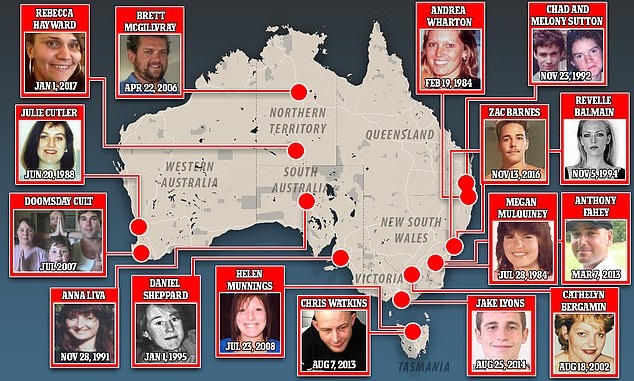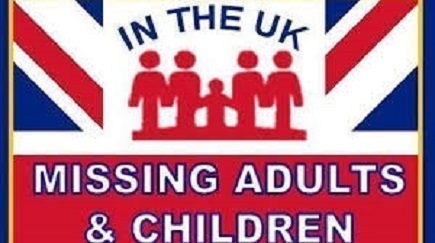Missing
Monica Renita Bennett


Monica, approximately 1989; Age when reported missing: 38 (approximately 2011)
Date and time person was reported missing : 06/21/1989
Missing location (approx) :
Brunswick, Georgia
Missing classification : Endangered Missing
Gender : Female
Ethnicity :
Black
DOB : 10/27/1973 (47)
Age at the time of disappearance: 15 years old
Height / Weight : 5'5, 130 pounds
Distinguishing characteristics, birthmarks, tattoos
: African-American female. Black hair, brown eyes. Monica's ears are pierced.
Information on the case from local sources, may or may not be correct : Monica and her brother, Michael, were last seen at HeritAge at the time of disappearance: Apartments in the 5700 block of Altama Avenue in Brunswick, Georgia on June 21, 1989.
Their mother, Deborah George, and her husband, Robert L. George, were separated, and Michael and Monica were staying with other relatives: Monica with her biological father, and Michael with Robert's first wife and his half-siblings on his father's side. (Robert had still been married to his first wife when Michael was born, and Michael did not take his last name. Robert's first wife treated Michael very well and accepted him into the family. Later, Robert divorced his wife wife and married Deborah, and they had four daughters.)
There are reports that Monica and Michael were helping pack up Robert's apartment in preparation for his upcoming move to Alabama, and that they disappeared after he dropped them off at their mother's residence. However, according to the Bennett children's siblings, Robert's apartment was nearly empty at the time.
Monica was very close to her oldest sister, Shelia Wigfall. By 1989, Wigfall was no longer living at home, although she was still in high school at Glynn Academy, which Michael and Monica also attended. Wigfall was married, pregnant with her first child and living with her in-laws, but she and Monica spoke to each other every day at school.
Early in 1989, Monica had gone to Wigfall at school and said Robert had been Gender : ually abusing her and she didn't want to go home. Wigfall took her to the school guidance counselor's office, and the guidance counselor took them to the police. When Deborah found out about her daughter's allegations, she told the police she didn't believe them and thought Monica was just making the stories up because she didn't want to live at home anymore. The matter was dropped without any follow-up from the authorities.
Even though years earlier Deborah had walked in on Robert Gender : ually abusing her then thirteen-year-old sister, and even after one of Monica's sisters caught Robert trying to sneak into her room at night, Deborah refused to believe Robert was abusing Monica. Michael was very close to Robert and didn't believe Monica's allegations either, until late spring, he walked in on Robert molesting his sister.
Michael told Deborah what he'd seen, and this is when Deborah and Robert separated, Michael moved in with Robert's first wife, and Monica moved in with her biological father. (Little is known about Monica's father, but her family stated she would not have chosen to live with him except for lack of better options.) Robert and Deborah's other children stayed with Deborah and saw their father on weekends.
Michael and Monica disappeared weeks after Robert and Deborah's separation. Although he'd just gotten an apartment in Brunswick, Robert decided to move back to his home state of Alabama. By the day of Michael and Monica's disappearance, Robert's apartment was almost entirely packed up, with only some bedding and essentials still unpacked.
On the afternoon of June 21, Robert went to his ex-wife's house and told Michael to get in the car with him so Michael could help him pack. Michael didn't want to go with him and was crying when they left together. Robert then picked Monica up from her father's house, and they went to Robert's apartment complex.
The children's aunt also lived at the complex, across the courtyard from Robert's apartment, and Michael and Monica made a surprise visit to her before dark that evening and had something to eat at her apartment. When she walked them out at about 8:30 p.m., she saw Robert outside.
Michael and Monica walked away, and Robert spoke to the children's aunt and asked her to intercede with Deborah and get her to let him come home. The aunt called Deborah on a pay phone, and then Robert spoke to Deborah on the phone, as Monica and Michael walked up the hill ahead and out of sight. This is the last time anyone besides Robert saw them.
Robert later gave two different stories about his son and stepdaughter's disappearances: one was that they ran out of his apartment while he was there and never came back, and the second was that he dropped them off at the apartment and went away to run some errands, and when he returned they were gone.
(Curiously, the police report about Michael and Monica's disappearance said that Robert called Deborah at 8:30 p.m. to say the children were missing. Robert was speaking to Deborah on the phone at about that time, according to the children's aunt, but Monica and Michael were still within eyesight.)
According to Michael and Monica's younger sisters, later that evening Robert picked them up from their mother's home and drove in the streets around John's apartment complex slowly, looking around. He didn't call Michael or Monica's names or ask any passersby if they'd seen them. He then took the children to his apartment. One of the girls recalled that one of the beds at the apartment was missing its sheets and comforter, and she noticed two trash bags in the apartment by the front door, which Robert said contained Monica and Michael's belongings.
Within a few days, Robert's car disappeared; his children never found out what had happened to it. He and Deborah reconciled within a few weeks of Michael and Monica's disappearances, took their remaining children and moved to Alabama on a bus, leaving Wigfall behind in Georgia.
Many of Monica and Michael's relatives believe Robert was involved in their disappearances. Deborah's mother described him as a controlling, manipulative and violent husband who occasionally beat Deborah, and Michael and Monica's younger siblings also remember episodes of violent behavior by their father. After the move to Alabama, Deborah would occasionally leave her husband, but would always return to him. Often when she left, she would leave their children behind in his care.
Robert's brother has also been mentioned as possibly having been involved in Michael and Monica's cases, or at least knowing what happened to them. He had lived with the family off and on for years, and Robert had also lent him money. Wigfall stated he Gender : ually abused her when she was young, and Deborah had warned the other children to stay away from him.
For decades after Michael and Monica disappeared, the police wrote them off as runaways; both Robert and Deborah said they had run away, and that Monica had a boyfriend who was involved with drugs. The police took reports for their disappearances but didn't actually investigate until the early 2000s, when the children were reclassified as "endangered missing."
The Bennett children didn't take any money or belongings when they disappeared, and there's been no record of their existence anywhere in the country since 1989. Foul play is now suspected in Michael and Monica's disappearances.
Other information and links : ncy
Glynn County Police Department
912-267-5700
September 2021 updates and sources
Missing Children�s Statistics
One Missing Child Is One Too Many
The lack of a common definition of �missing child,� and a common response to the issue, results in few reliable statistics on the scope of the problem around the world.
Even with this challenge, we know that:
In Australia, an estimated 20,000 children are reported missing every year.
Australian Federal Police, National Coordination Centre.
In Canada, an estimated 45,288 children are reported missing each year.
Government of Canada, Canada�s Missing � 2015 Fast Fact Sheet.
In Germany, an estimated 100,000 children are reported missing each year.
Initiative Vermisste Kinder.
In India, an estimated 96,000 children go missing each year.
Bachpan Bachao Andolan, Missing Children of India.
In Jamaica, an estimated 1,984 children were reporting missing in 2015.
Jamaica�s Office of Children�s Registry
In Russia, an estimated 45,000 children were reported missing in 2015.
Interview with Pavel Astakhov MIA �Russia Today�, Apr. 4, 2016.
In Spain, an estimated 20,000 children are reported missing every year.
Spain Joins EU Hotline for Missing Children, Sep. 22, 2010.
In the United Kingdom, an estimated 112,853 children are reported missing every year.
National Crime Agency, UK Missing Persons Bureau.
In the United States, an estimated 460,000 children are reported missing every year.
Federal Bureau of Investigation, Missing Children�s Statistics
One Missing Child Is One Too Many
The lack of a common definition of �missing child,� and a common response to the issue, results in few reliable statistics on the scope of the problem around the world.
Even with this challenge, we know that:
In Australia, an estimated 20,000 children are reported missing every year.
Australian Federal Police, National Coordination Centre.
In Canada, an estimated 45,288 children are reported missing each year.
Government of Canada, Canada�s Missing � 2015 Fast Fact Sheet.
In Germany, an estimated 100,000 children are reported missing each year.
Initiative Vermisste Kinder.
In India, an estimated 96,000 children go missing each year.
Bachpan Bachao Andolan, Missing Children of India.
In Jamaica, an estimated 1,984 children were reporting missing in 2015.
Jamaica�s Office of Children�s Registry
In Russia, an estimated 45,000 children were reported missing in 2015.
Interview with Pavel Astakhov MIA �Russia Today�, Apr. 4, 2016.
In Spain, an estimated 20,000 children are reported missing every year.
Spain Joins EU Hotline for Missing Children, Sep. 22, 2010.
In the United Kingdom, an estimated 112,853 children are reported missing every year.
National Crime Agency, UK Missing Persons Bureau.
In the United States, an estimated 460,000 children are reported missing every year.
Federal Bureau of Investigation, NCIC.
This, however, is only a snapshot of the problem. In many countries, statistics on missing children are not even available; and, unfortunately, even available statistics may be inaccurate due to: under-reporting/under-recognition; inflation; incorrect database entry of case information; and deletion of records once a case is closed.
The lack of numbers, and the discrepancy in the numbers that do exist, is one of the key reasons why ICMEC developed and advocates for the Model Missing Child Framework, which assists countries with building strong, well-rounded national responses, and facilitates more efficient investigations, management, and resolution of missing children cases.
We firmly believe that one missing child is one too many, and we are committed to improving the global understanding of and response to missing and abducted children.
Here is a look at missing children in the United States. There are several different types of missing children: runaways, family abductions, lost or �thrown away� and non-family abductions. Advances in technology, communications through public alerts and greater cooperation from law enforcement have facilitated the recovery process.
Statistics
According to the FBI�s National Crime Information Center (NCIC) Missing Person File, there are 89,637 active missing person records, of which juveniles under the age of 18 account for 30,396 (34%) of the records. (as of December 31, 2020)
AMBER Alert
�AMBER (America�s Missing: Broadcast Emergency Response) Alerts are emergency messages broadcast when a law enforcement agency determines that a child has been abducted and is in imminent danger. The broadcasts include information about the child and the abductor, including physical descriptions as well as information about the abductor�s vehicle - which could lead to the child�s recovery.�
The AMBER Alert system began in 1996 and was named in honor of Amber Hagerman, a 9-year-old who was abducted in Arlington, Texas, and murdered.
All 50 states, the District of Columbia, Puerto Rico, and the US Virgin Islands have AMBER Alert plans in place to help find missing children in danger.
As of December 2020, the AMBER Alert program has been credited with the safe recovery of 1029 children..
This, however, is only a snapshot of the problem. In many countries, statistics on missing children are not even available; and, unfortunately, even available statistics may be inaccurate due to: under-reporting/under-recognition; inflation; incorrect database entry of case information; and deletion of records once a case is closed.
The lack of numbers, and the discrepancy in the numbers that do exist, is one of the key reasons why ICMEC developed and advocates for the Model Missing Child Framework, which assists countries with building strong, well-rounded national responses, and facilitates more efficient investigations, management, and resolution of missing children cases.
We firmly believe that one missing child is one too many, and we are committed to improving the global understanding of and response to missing and abducted children.
Here is a look at missing children in the United States. There are several different types of missing children: runaways, family abductions, lost or �thrown away� and non-family abductions. Advances in technology, communications through public alerts and greater cooperation from law enforcement have facilitated the recovery process.
Statistics
According to the FBI�s National Crime Information Center (Missing Children�s Statistics
One Missing Child Is One Too Many
The lack of a common definition of �missing child,� and a common response to the issue, results in few reliable statistics on the scope of the problem around the world.
Even with this challenge, we know that:
In Australia, an estimated 20,000 children are reported missing every year.
Australian Federal Police, National Coordination Centre.
In Canada, an estimated 45,288 children are reported missing each year.
Government of Canada, Canada�s Missing � 2015 Fast Fact Sheet.
In Germany, an estimated 100,000 children are reported missing each year.
Initiative Vermisste Kinder.
In India, an estimated 96,000 children go missing each year.
Bachpan Bachao Andolan, Missing Children of India.
In Jamaica, an estimated 1,984 children were reporting missing in 2015.
Jamaica�s Office of Children�s Registry
In Russia, an estimated 45,000 children were reported missing in 2015.
Interview with Pavel Astakhov MIA �Russia Today�, Apr. 4, 2016.
In Spain, an estimated 20,000 children are reported missing every year.
Spain Joins EU Hotline for Missing Children, Sep. 22, 2010.
In the United Kingdom, an estimated 112,853 children are reported missing every year.
National Crime Agency, UK Missing Persons Bureau.
In the United States, an estimated 460,000 children are reported missing every year.
Federal Bureau of Investigation, NCIC.
This, however, is only a snapshot of the problem. In many countries, statistics on missing children are not even available; and, unfortunately, even available statistics may be inaccurate due to: under-reporting/under-recognition; inflation; incorrect database entry of case information; and deletion of records once a case is closed.
The lack of numbers, and the discrepancy in the numbers that do exist, is one of the key reasons why ICMEC developed and advocates for the Model Missing Child Framework, which assists countries with building strong, well-rounded national responses, and facilitates more efficient investigations, management, and resolution of missing children cases.
We firmly believe that one missing child is one too many, and we are committed to improving the global understanding of and response to missing and abducted children.
Here is a look at missing children in the United States. There are several different types of missing children: runaways, family abductions, lost or �thrown away� and non-family abductions. Advances in technology, communications through public alerts and greater cooperation from law enforcement have facilitated the recovery process.
Statistics
According to the FBI�s National Crime Information Center (NCIC) Missing Person File, there are 89,637 active missing person records, of which juveniles under the age of 18 account for 30,396 (34%) of the records. (as of December 31, 2020)
AMBER Alert
�AMBER (America�s Missing: Broadcast Emergency Response) Alerts are emergency messages broadcast when a law enforcement agency determines that a child has been abducted and is in imminent danger. The broadcasts include information about the child and the abductor, including physical descriptions as well as information about the abductor�s vehicle - which could lead to the child�s recovery.�
The AMBER Alert system began in 1996 and was named in honor of Amber Hagerman, a 9-year-old who was abducted in Arlington, Texas, and murdered.
All 50 states, the District of Columbia, Puerto Rico, and the US Virgin Islands have AMBER Alert plans in place to help find missing children in danger.
As of December 2020, the AMBER Alert program has been credited with the safe recovery of 1029 children.) Missing Person File, there are 89,637 active missing person records, of which juveniles under the age of 18 account for 30,396 (34%) of the records. (as of December 31, 2020)
AMBER Alert
�AMBER (America�s Missing: Broadcast Emergency Response) Alerts are emergency messages broadcast when a law enforcement agency determines that a child has been abducted and is in imminent danger. The broadcasts include information about the child and the abductor, including physical descriptions as well as information about the abductor�s vehicle - which could lead to the child�s recovery.�
The AMBER Alert system began in 1996 and was named in honor of Amber Hagerman, a 9-year-old who was abducted in Arlington, Texas, and murdered.
All 50 states, the District of Columbia, Puerto Rico, and the US Virgin Islands have AMBER Alert plans in place to help find missing children in danger.
As of December 2020, the AMBER Alert program has been credited with the safe recovery of 1029 children.
Interactive Missing Person Search Map


























